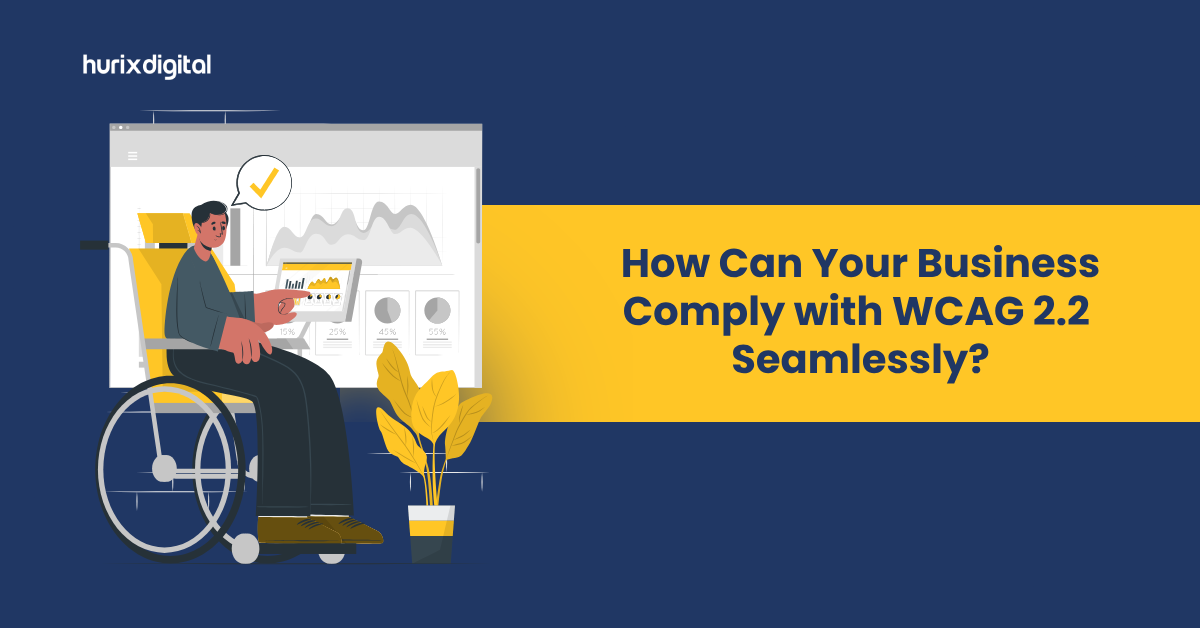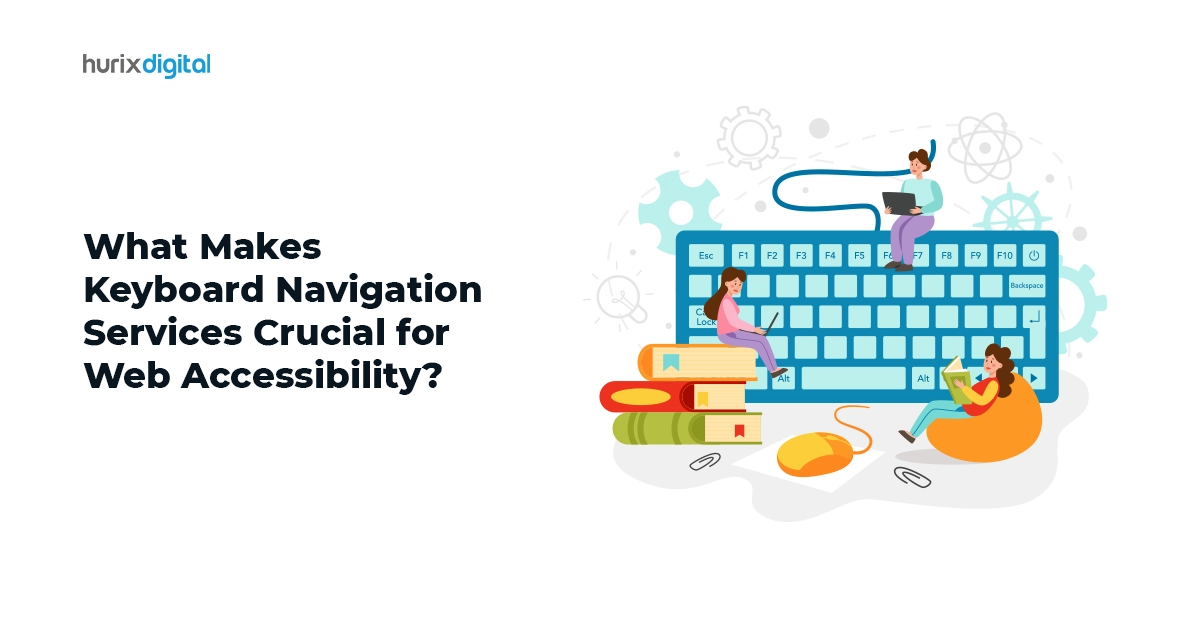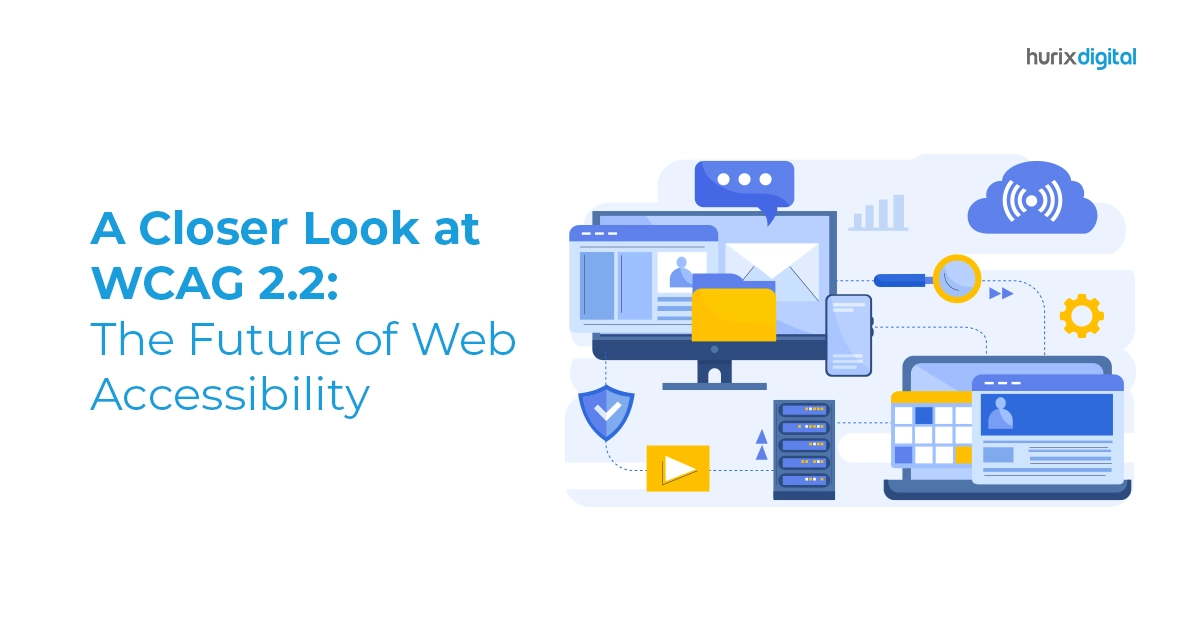Summary
This guide provides a comprehensive overview of WCAG 2.2 compliance, including the rules and levels of compliance. It also provides a checklist of recommended actions to ensure your website is accessible at all WCAG levels.
As a forward-thinking business, keeping your digital accessibility up-to-date with the latest standards is a standard procedure. To make your business universally accessible, staying in line with WCAG 2.2 standards is crucial.
But how can you ensure seamless WCAG compliance and meet all WCAG compliance levels?
Let’s dive deeper and explore how your business can meet WCAG website compliance, leverage an effective WCAG accessibility checker, and navigate through a WCAG audit.
Table of Contents:
- What is WCAG 2.2 Compliance?
- What are WCAG Compliance Levels: A, AA, and AAA
- Five Benefits of WCAG Compliance for Your Business’s Online Presence
- Step-by-Step Guide to WCAG Website Compliance
- Summing Up
What is WCAG 2.2 Compliance?
WCAG 2.2, which stands for Web Content Accessibility Guidelines, version 2.2, is a set of rules that ensure your website is accessible to people with disabilities.
These rules are categorized into three levels of WCAG compliance levels: A (lowest), AA (midrange), and AAA (highest). To ensure that your website is aligned with these levels, using a WCAG accessibility checker might be helpful.
It systematically tests your site for WCAG website compliance, ensuring your digital space is inclusive and legally sound. The benefits of understanding the WCAG guidelines and a WCAG Accessibility Checker are countless, as summarized below:
- Familiarizing yourself with the WCAG guidelines and its various WCAG compliance levels is a key element in your journey to achieving compliance. This understanding of the fundamental rules forms the foundational step.
- Employing tools such as the WCAG Accessibility Checker not only streamlines the process but also ensures detailed attention, making certain nothing is missed.
Striving for WCAG compliance is not just for legal precautions; it also helps in expanding your business reach to more potential customers who might be living with a disability.
What are WCAG Compliance Levels: A, AA, and AAA?
The Web Content Accessibility Guidelines, commonly referred to as WCAG, serve the important function of improving web content accessibility for individuals dealing with different impairments. To accomplish this mission comprehensively, WCAG compliance levels A, AA, and AAA have been distinctly created.
- Level A acts as the fundamental tier of compliance, devised to ensure a basic degree of accessibility in web content. Websites that fail to meet these criteria often prove significantly challenging for individuals with disabilities to navigate and utilize.
- Level AA occupies the mid-range, encapsulating all the criteria of A-level with added stipulations. A significant number of businesses set AA-level compliance as their target, considering the ideal balance it offers between achieving accessibility and the effort required in its application.
- Level AAA holds the ranking of the uppermost level of WCAG compliance. Comprising all the guidelines encompassed in the A and AA levels, it further bolsters them with sophisticated protocols. Although reaching the AAA level might not be a practicable goal for every business, it is an objective worth aiming for.
Also Read: Understanding WCAG – Quick Facts and Guide
Five Benefits of WCAG Compliance for Your Business’s Online Presence
Adherence to WCAG 2.2 compliance brings about significant advantages for your business, particularly in today’s digital age, where accessibility is pivotal.
Whether it’s about amplifying user interactions or boosting your company’s image, aligning with the updated standard levels of WCAG compliance isn’t just a matter of ethics – it’s a strategic move for your business. Here’s why:
1. Helps Increase User Interaction
Websites built with compliance with WCAG 2.2 are not only easy to navigate but are also user-friendly – a win-win for all users, including those with disabilities.
The WCAG accessibility checker is an instrumental tool for identifying issues that might negatively impact the user experience, hence optimizing your website.
2. Increased Digital Penetration
By adopting measures to enhance WCAG website compliance, a company can dramatically broaden its digital reach, effectively tapping into an audience group that was previously unreachable. In essence, improved accessibility elaborates the narratives of a company’s online visibility and brand recognition.
Worth noting, according to a report by the World Bank, globally, 1 billion people, constituting 15% of the world’s population, experience some form of disability. Catering to this significant demographic can have a huge, positive impact on a business.
3. Optimizing SEO Strategies
Adherence to WCAG compliance mutually benefits your website’s accessibility endeavors and search engine optimization strategies. Thus, integrating WCAG 2.2 compliance can significantly contribute to optimizing your SEO strategies.
4. Regulatory Adherence
Compliance with the WCAG 2.2 is not merely a choice for businesses but a mandate enforced by several regulatory authorities worldwide. Failing to meet the WCAG compliance levels can lead to penalties and legal issues.
Undertaking a preliminary WCAG audit and recurrent WCAG testing can act as a protective shield, preventing your business from facing potential fiscal setbacks and brand image impairment.
5. Fortify Brand’s Reputation
Staying current with WCAG website compliance not only underscores your commitment to accessibility but also serves as a compelling testament to your dedication toward inclusion. By ensuring all users have unrestricted access to information and services, such a stance can substantially enhance your brand’s reputation and loyalty factor.
Step-by-Step Guide to WCAG Website Compliance
Moving towards WCAG 2.2 compliance may seem challenging, but by leveraging the comprehensive strategy outlined beneath, your business can achieve seamless conformity with WCAG compliance levels.
This journey not only enhances your website’s accessibility but also augments its user experience, elevating your brand’s credibility in the marketplace.
1. Identifying your Current WCAG Compliance Level
The primary stride towards attaining WCAG website compliance is pinpointing your present position. Use a credible WCAG accessibility checker for this preliminary audit.
Familiarize yourself with aspects where your site thrives and where it needs improvements in terms of accessibility. This insight will facilitate the crafting of a strategic plan for enhancement.
2. Set your Desired WCAG Compliance Level
Considering your business objectives and target demographics, establish the compliance level you aspire to accomplish.
The three prominent WCAG compliance levels are A, AA, and AAA, with AAA being the most rigorous. A majority of businesses aim for level AA as it offers a healthy equilibrium between affordability and compliance.
3. Update your Website Design and Content
Having decided your target compliance level, the subsequent step is to revamp your website design and content to meet the chosen criteria.
This phase can be labor-intensive, encompassing text modifications, color contrast amendments, navigation adjustments, and more. Nevertheless, it is imperative for the achievement of WCAG compliance.
4. Verify for Compliance
Following requisite changes, employ the WCAG accessibility checker yet again to examine whether your site complies with the standards now. Undertake WCAG testing on a variety of devices and browsers to guarantee a thorough compliance verification.
5. Record and Uphold your Compliance Status
Upon accomplishing the desired compliance standard, it is essential to sustain it. Regular WCAG audits ensure that you maintain compliance as your website progresses. Document all measures taken for maintaining transparency and as a record for displaying your compliance to stakeholders or legislative bodies.
One – It’s crucial to understand that getting WCAG compliance isn’t a one-time affair; instead, it’s an ongoing process. With your website’s continuous evolution, the accessibility requirements too will adapt and evolve.
By conducting consistent testing and updates, your business ensures it remains in line with these fluctuating standards. This commitment not only guarantees a smooth, user-friendly experience but also ensures inclusivity for all your site visitors.
Check out Exclusive: WCAG – The Road to Making Businesses Accessible
Summing Up
In the digital era we live in, businesses must make their online services accessible to all, including those with disabilities. This involves complying with established accessibility guidelines, like the WCAG 2.2. This is not just good business decorum but a legal requirement as well.
Don’t lag in the digital accessibility realm. Take the first step towards complete WCAG accessibility compliance today with Hurix Digital’s AI-powered accessibility solutions. At Hurix Digital, we believe in crafting digital experiences that everyone can enjoy.
Get in touch with Hurix Digital and usher into the inclusive digital world now.








